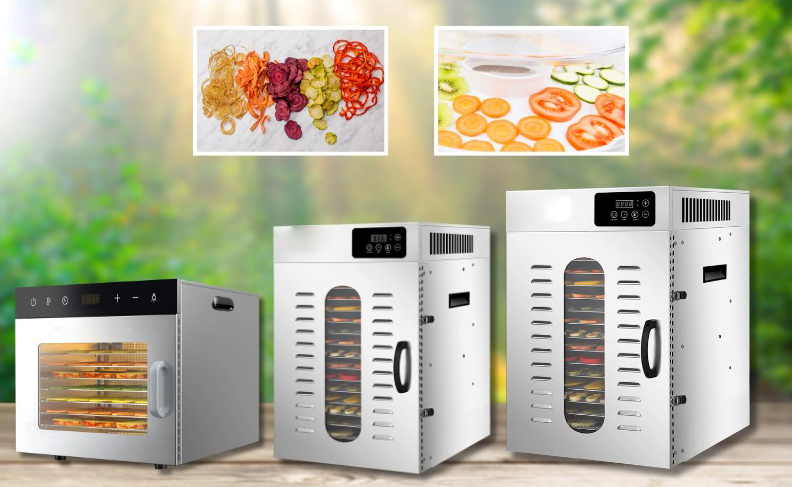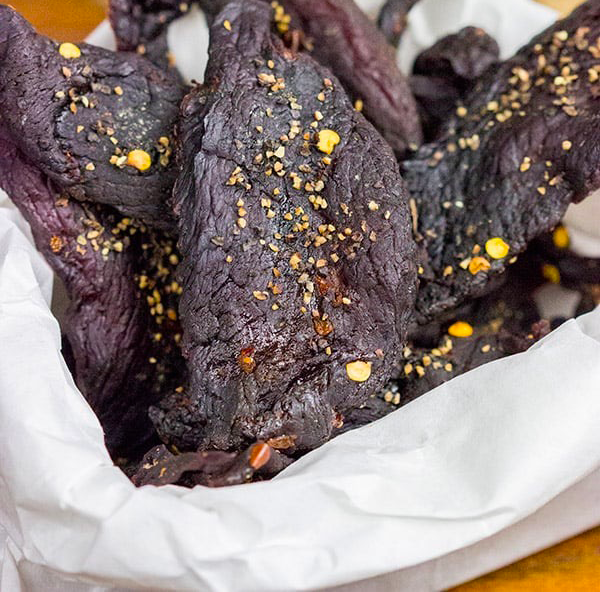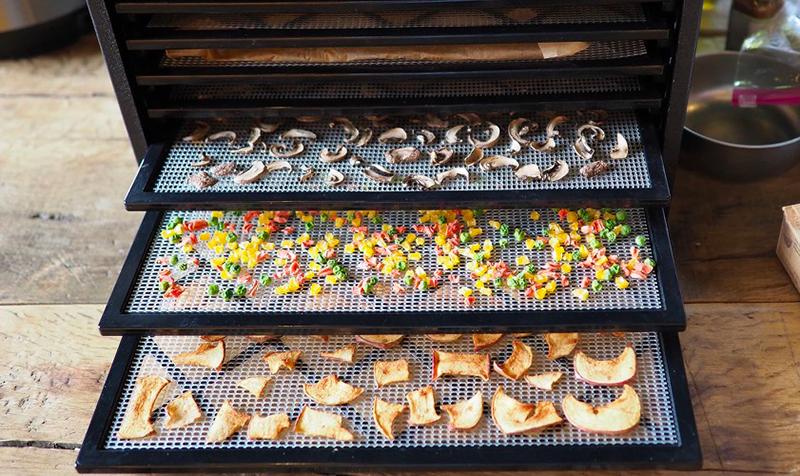
Content Menu
● Introduction to Dehydrators
>> Analog vs. Digital Dehydrators
● Setting Up Your Dehydrator
● Operating Your Dehydrator
● Tips for Effective Dehydrating
● Advanced Techniques for Dehydrating
>> Dehydrating Specific Foods
>> Making Jerky
● Maintenance and Cleaning
● Troubleshooting Common Issues
● Conclusion
● Frequently Asked Questions
>> 1. What are the benefits of using a dehydrator?
>> 2. How do I choose the right temperature for dehydrating different foods?
>> 3. Can I dehydrate food without a dehydrator?
>> 4. How do I store dried foods to maintain freshness?
>> 5. What safety precautions should I take when using a dehydrator?
● Citations:
Dehydrators are versatile kitchen appliances used for removing moisture from food, preserving it for longer periods while retaining its nutritional value. They are ideal for health-conscious individuals, outdoor enthusiasts, and anyone looking to enjoy dried fruits, vegetables, meats, and herbs year-round. In this article, we will guide you through the process of using a dehydrator machine effectively, including setup, operation, and maintenance tips.

Introduction to Dehydrators
Dehydrators work by circulating hot air around the food, which helps to evaporate moisture. This process can be controlled by adjusting the temperature and time settings on the machine. There are generally two types of dehydrators: analog and digital. Analog dehydrators use a simple temperature control knob, while digital models offer more precise temperature and time settings, often with preset options for different types of food.
Analog vs. Digital Dehydrators
- Analog Dehydrators: These are simpler and less expensive. They typically have a temperature control knob and may not have a timer. Users must manually monitor the drying process.
- Digital Dehydrators: These offer more features, including precise temperature control (usually in 5°F increments), timers, and sometimes preset settings for specific foods. They are ideal for frequent users who want more control over the drying process.
Setting Up Your Dehydrator
Before using your dehydrator, ensure it is properly set up:
1. Place the Base: Position the dehydrator base on a sturdy countertop, away from walls and other electronic devices to ensure good airflow and safety.
2. Assemble Trays: Stack the trays on the base. Always use at least four trays, even if some are empty, to ensure proper air circulation.
3. Attach the Power Unit: Place the power unit on top of the stacked trays.
4. Plug In: Connect the dehydrator to a suitable electrical outlet.
Operating Your Dehydrator
Here's how to start dehydrating:
1. Prepare Food: Slice or chop food into thin, uniform pieces to ensure even drying. Remove any seeds or pits that might affect drying.
2. Load Trays: Place prepared food on the trays, leaving space between pieces for air circulation. Do not cover the central hole on each tray.
3. Set Temperature and Time: Use the control panel to set the desired temperature and time. Common temperatures range from 90°F to 160°F (32°C to 71°C).
4. Start Dehydrating: Press the start button to begin the drying process.
Tips for Effective Dehydrating
- Rotate Trays: Periodically rotate the trays to ensure even drying.
- Monitor Progress: Check on the food periodically to avoid over-drying.
- Store Dried Food: Once dried, store food in airtight containers to maintain freshness.

Advanced Techniques for Dehydrating
Dehydrating Specific Foods
- Fruits: Fruits like apples, bananas, and strawberries are popular for dehydrating. They are typically dried at temperatures between 135°F to 145°F (57°C to 63°C).
- Vegetables: Vegetables such as carrots, zucchini, and bell peppers can be dried for snacks or added to soups. Use similar temperatures as for fruits.
- Meats: Jerky is a favorite among outdoor enthusiasts. Beef, turkey, or chicken can be dried at higher temperatures (150°F to 160°F or 66°C to 71°C) for safety.
Making Jerky
Making jerky involves marinating sliced meat in your favorite seasonings before drying. Here's a simple recipe:
1. Marinate: Mix soy sauce, garlic powder, and black pepper in a bowl. Add sliced beef and marinate for at least 4 hours.
2. Dry: Place marinated slices on the dehydrator trays and dry at 160°F (71°C) for about 3 to 4 hours, or until the desired level of dryness is achieved.
Maintenance and Cleaning
To extend the life of your dehydrator:
1. Clean Trays: Wash trays and liners in warm soapy water or the top rack of a dishwasher.
2. Wipe Base: Use a damp cloth to clean the base unit. Avoid immersing it in water.
3. Dry After Cleaning: Ensure all parts are dry before storing to prevent moisture buildup.
Troubleshooting Common Issues
- Over-Drying: Check food frequently to avoid over-drying. If food becomes too dry, it can become brittle or lose flavor.
- Under-Drying: If food is not dry enough, it may spoil quickly. Increase drying time or temperature slightly.
- Uneven Drying: Rotate trays during the drying process to ensure even drying.
Conclusion
Using a dehydrator machine is straightforward and offers numerous benefits for food preservation and health. By following these steps and tips, you can enjoy a variety of dried foods throughout the year. Whether you're a beginner or an experienced user, understanding how to use your dehydrator effectively will enhance your culinary experiences.

Frequently Asked Questions
1. What are the benefits of using a dehydrator?
Dehydrators help preserve food by removing moisture, which prevents spoilage and retains nutrients. They are also versatile, allowing you to dry a wide range of foods from fruits and vegetables to meats and herbs.
2. How do I choose the right temperature for dehydrating different foods?
The ideal temperature varies depending on the food type. For example, fruits and vegetables are typically dried at lower temperatures (135°F to 145°F), while meats require higher temperatures (150°F to 160°F) for safety.
3. Can I dehydrate food without a dehydrator?
Yes, you can dehydrate food without a dehydrator by using your oven on its lowest temperature setting or by sun-drying. However, a dehydrator provides more consistent results and is generally more efficient.
4. How do I store dried foods to maintain freshness?
Dried foods should be stored in airtight, moisture-proof containers. Vacuum-sealing can extend shelf life significantly. Keep containers away from direct sunlight and moisture.
5. What safety precautions should I take when using a dehydrator?
Always follow the manufacturer's instructions. Keep the dehydrator away from children and pets, and avoid touching hot surfaces. Ensure proper ventilation in the area where the dehydrator is used.
Citations:
[1] https://www.nesco.com/wp-content/uploads/2024/07/Dehydrator-Instructions-and-Recipes-Booklet-300-02750.pdf
[2] https://patents.google.com/patent/CN110207480A/zh
[3] https://media.tractorsupply.com/is/content/TractorSupplyCompany/tsc/product/2/09/91/40/2099140_Man1.pdf
[4] https://patents.google.com/patent/CN112481977B/zh
[5] https://www.everythingkitchens.com/media/manual/7100.pdf
[6] https://patents.google.com/patent/CN1110593C/zh
[7] https://www.youtube.com/watch?v=lEUA2t2XD5M
[8] https://patents.google.com/patent/CN1405396A/zh











